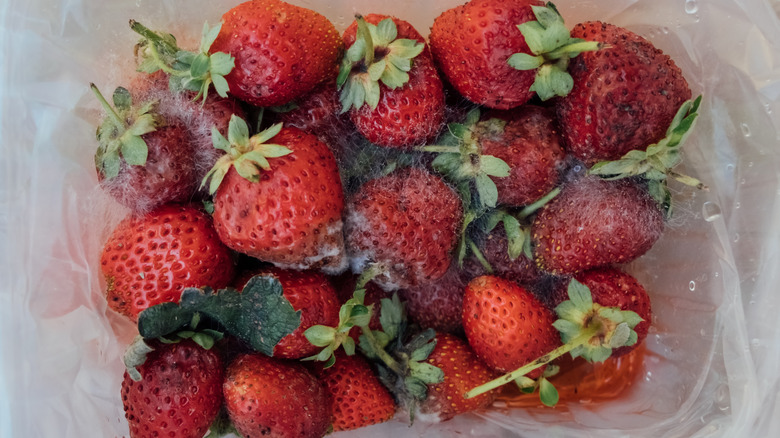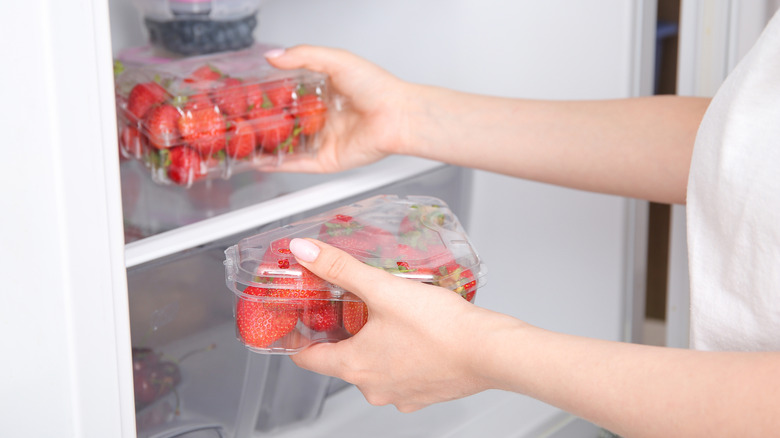This Type Of Common Storage Container Will Totally Ruin Strawberries
If you want to ruin a beautiful bunch of fresh strawberries, put them in a tightly sealed container. And if you want to ruin them as quickly as possible, wash them and then store them in said container while they're still wet. As with the 13 mistakes everyone makes when buying strawberries, this is often done unknowingly, and with all good intentions. Once you have your beautiful bunch of fresh strawberries, you may be eager to wash and then store them in a tightly sealed container or plastic bag in the fridge, so they're ready to grab and eat whenever — but this is exactly what you don't want to do. The issue is not necessarily the container itself, but rather, a combination of moisture and a lack of air flow inside the container
Strawberries are not potato chips, and storing them without air flow will not help prolong their freshness, but will instead accelerate their spoilage. Strawberries already have a high moisture content, and that, along with porous delicate skin, creates a breeding ground for mold growth if the berries are washed and not properly dried prior to storage.
One of the best ways to keep strawberries from going bad is incredibly easy to accomplish — leave them unwashed in the container they came in, and place it in your fridge's crisper drawer. When you're ready to eat them, only wash what you're going to consume or use in a recipe at that time.
The wash now, eat later method that actually keeps strawberries fresh
If you're like me and prefer to save time by washing and prepping food all at once, there's an effective way to prep strawberries in advance and keep them fresh. You can stretch the lifespan of your strawberries with a simple wash of vinegar and water—one part vinegar to three parts water— or replace the vinegar with one tablespoon of baking soda and four cups of water. The acidity in the solution helps remove dirt and bacteria-causing mold, which further preserves their shelf life.
Don't worry: The strawberries won't pick up the flavor of either solution. Let the strawberries soak for 15 minutes, drain, and then let them dry for as long as possible on a clean kitchen towel or drying mat. Transfer them to a paper towel-lined container with the lid loosely placed on top — not sealed — and store them in your fridge's crisper drawer. Also, a salad spinner is for much more than drying greens; you can use it to further dry your strawberries by placing a paper towel on the bottom bowl to catch any residual moisture that comes off the berries during spinning.
Personally, I like to store my soaked and dried strawberries in a ventilated container with a built-in colander for maximum air flow and excess water drainage. I keep it on a shelf in my fridge, and the strawberries last for approximately a week before showing signs of deterioration.

